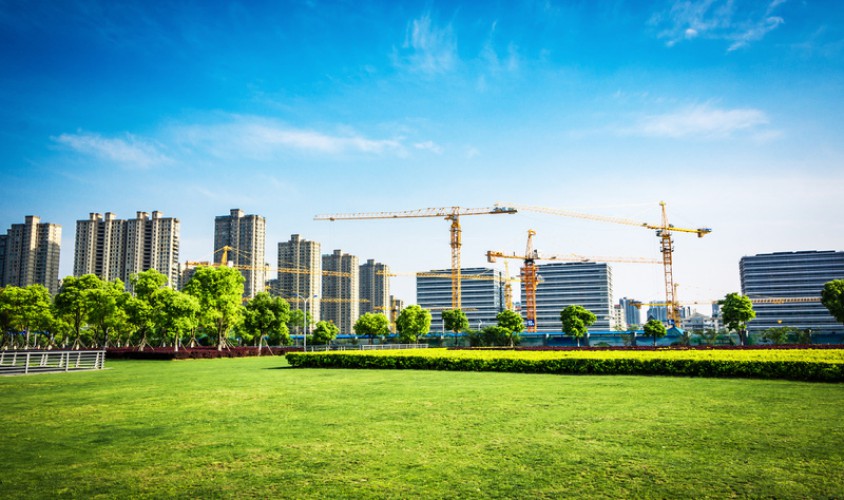Introduction:
The construction industry is one of the largest contributors to carbon emissions, accounting for about 39% of global carbon dioxide emissions. The industry uses large amounts of energy and materials, resulting in a significant impact on the environment. However, with the increasing awareness of climate change and the need for sustainability, the industry is shifting towards sustainable construction practices to reduce its carbon footprint. In this white paper, we will explore the various ways in which sustainable construction practices help to reduce carbon footprint and their benefits.
Materials and Design:
The materials used in construction have a significant impact on carbon footprint. Traditional building materials such as concrete and steel are significant contributors to carbon emissions. Sustainable construction practices focus on using materials with lower carbon footprints, such as bamboo, straw bales, and rammed earth. These materials are renewable and have a lower impact on the environment.
Building design is another essential aspect of sustainable construction. Sustainable building design techniques focus on optimizing the use of natural light, reducing the need for artificial lighting and heating. The incorporation of insulation materials, such as recycled cellulose and wool, helps to reduce energy consumption by maintaining indoor temperatures. The use of low-flow plumbing fixtures and water-efficient landscaping also helps to conserve water resources.
Renewable Energy:
The use of renewable energy sources is another critical aspect of sustainable construction. The construction industry is a significant consumer of energy, and the use of fossil fuels contributes to greenhouse gas emissions. The use of solar panels, wind turbines, and geothermal heating systems help to reduce dependence on fossil fuels. Additionally, the use of smart building technologies, such as energy-efficient lighting systems and automated temperature controls, reduces energy consumption and carbon footprint.
Efficient Building Techniques:
Sustainable construction practices also focus on building techniques that minimize waste and energy consumption. Prefabrication and modular construction reduce the amount of waste generated during the construction process. Additionally, the use of innovative construction techniques, such as cross-laminated timber, can significantly reduce the time and energy required to construct buildings.
Benefits of Sustainable Construction:
Incorporating sustainable construction practices not only helps to reduce carbon footprint and emissions but also has numerous other benefits. These include:
Healthier indoor environments: By using eco-friendly materials and reducing the use of chemicals in construction, sustainable buildings create healthier living spaces. Improved indoor air quality and reduced exposure to toxins can improve the health and well-being of building occupants.
Cost savings:
Sustainable construction techniques, such as the use of renewable energy and efficient building design, reduce energy consumption and can lead to significant cost savings over time. While sustainable construction may require an initial investment, the long-term savings in energy costs can outweigh the initial investment.
Increased property value:
Sustainable buildings are in high demand and are more attractive to buyers and renters, leading to higher property values. In addition, green building certifications, such as LEED certification, can increase the value of a property.
Positive impact on the environment:
Sustainable construction practices help to reduce the environmental impact of the construction industry and contribute to a greener and more sustainable future. By reducing carbon emissions, conserving resources, and minimizing waste, sustainable construction practices help to create a healthier and more sustainable planet.
Conclusion:
Sustainable construction practices are critical in reducing the carbon footprint and emissions of the construction industry. The use of eco-friendly materials, renewable energy sources, and efficient building techniques not only benefits the planet but also leads to healthier living spaces, cost savings, and increased property value. However, sustainable construction is not just a trend, but a necessary step towards a greener and more sustainable future. By making sustainable construction practices a priority, we can build a better future for ourselves and generations to come.
About Author
Mr. Vijay Gupta
CEO & Founder at SoftTech
Mr. Vijay Gupta, an IIT Mumbai alumnus, is the Founder, Chairman and Managing Director of SoftTech Engineers Limited. He holds an M. Tech degree from IIT Mumbai. Vijay strongly believes that technology has to be leveraged extensively to bring in speed, efficiency and transparency in the AEC (Architecture, Engineering & Construction) industry for private as well as public sector organizations. He has a rich experience of about 30 years in the development of cutting-edge BIM/ CAD/ CAE /Project Management Enterprise Software in the AEC domain.
About SoftTech Engineers
A leading IT company (www.softtech-engr.com) facilitating business and technology transformation across the AEC industry through innovative software products and solutions. Equipped with 25+ years of deep domain expertise and industry knowledge, SoftTech has helped more than 4500 clients & government organizations, with more than 25000 users in India and around the world to gain a competitive edge and lead from the front in the industry.

